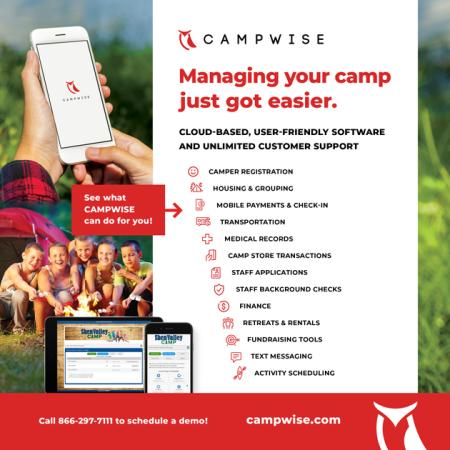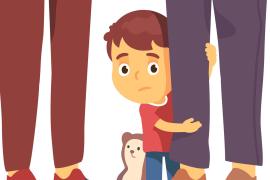"You can't talk about us, without us!" a good friend of mine has told me time and again. I can’t agree more. I write to you from and honor the land of the Lakota people on the Cheyenne River Sioux Tribe Reservation in South Dakota — where the YMCA of the Seven Council Fires and Camp Marrowbone reside. I am talking about the issue of cultural appropriation, and there is only so much I can say as an ally. If you are looking for approval to use someone else’s culture, I am not the person you need to talk to — but I do believe this is important work, so I will share what I know in the hope that it can help you in your journey to be respectful and welcoming of all potential campers.
I have been allowed to learn and observe so much in my time living in South Dakota. I have lived on this reservation for almost nine years now. Originally I am from Boston, Massachusetts. When I first arrived at this very special camp, I was overwhelmed by the beautiful culture, the immense poverty, the lack of resources, and the feeling of not knowing what I didn’t know. I asked one of the elders what to do, and he said I needed to sit and listen. So I did.
As I listened to the community around me, I wrote down my questions. I wrote down the norms I observed that were vastly different from the norms in the Northeast. When I circled back to the elder weeks later, I worried that some of my questions might offend him. He nodded and simply said, "We are learning together."
I have taken that motto to heart. “We are learning together” has been my guiding principle when working with other camps and organizations to address Native cultural appropriation.
Camp Marrowbone is uniquely located on a Lakota reservation and governed by a board of directors, the majority of whom are Native American. The camp is also located in two of the poorest counties in the nation. We tackle themes involving cultural appropriation and also shifts that are needed to address poverty culture. The two are linked but not the same.
What Is Native Cultural Appropriation?
According to We R Native, a comprehensive health resource for Native youth, by Native youth, cultural appropriation is “when someone from the dominant culture (i.e., the most visible and accepted culture in a society) takes aspects of an oppressed culture (one experiencing any form of repeated or prolonged discrimination) without permission” (We R Native, 2022).
What's the Harm?
Why is the specific language we use in camp — for the camp’s name, cabin names, in camp songs, etc. — so important? When individuals ask if they can still use certain words in their camps, I ask, “Why is identifying your age groups by Native tribe names essential to the youth development work you are doing?” Their answer tells me if they are ready for change. For future reference, an amazing group of individuals is developing a Cultural Appropriation Audit tool that camps will be able to use to elevate areas of growth related to cultural appropriation.
Imagine you had a program that made some campers feel excluded, and as a result they no longer cared to attend your camp. What would you do? You’d evaluate your programs and make a call to adjust your curriculum. A decision not to alter the program would show campers they weren’t valued enough at your camp to impact change.
What is your camp’s protocol when you play music? You would never air a song with swearing or derogatory sayings over your speakers. However, playing a song that uses cultural appropriation is in the same realm.
In truth, your camp’s “traditions” could be part of a person’s ancestry — and your actions may be damaging. And I could point to many instances where the appropriation has been disguised as appreciation.
Look at your camp demographics. Where are your areas of growth? Have you asked yourself why certain populations don’t attend your camp? Perhaps you haven’t taken steps to make them feel welcome in the first place. In my mind, a potential camper is just as valuable as a currently active camper.
Coming from an Irish Catholic background, I would feel out of place if there was an “Ireland” cabin just for the sake of having one. I’d feel worse yet if I were told, “Well, that’s just how it’s always been.”
We are working in a time when we should no longer use that phrase. Solid data and reasoning are needed to back up the why.
Have you ever thought about how the term “camp” itself can be off-putting? For many people, especially in our industry, the word invokes visions of the outdoors, fun, friendship, and caring. But what do you think that word means to someone who grew up in a refugee camp? Reservations started off as prisoner-of-war camps. Some may argue they still function in that manor, albeit with no guards at the boundaries.
A Checklist for Uncomfortable Work
As camp professionals we yearn for solutions; there is never a situation we can’t navigate or a problem we can’t solve. Still, confronting issues of cultural appropriation — and often our own biases — is uncomfortable work, and that’s OK. If we were going to have a step-by-step checklist to keep us on track, it might look something like this:
- Do your research, identify a person or persons who have the authority to aid you in your journey, and convene a task force or committee.
- Create a land acknowledgment.
- Check back in with your identified authority figure.
- Take a deep dive into your camp’s name and all of your programs, listing all your:
- Camp traditions
- Activities
- Cabin names
- Songs
- Opening and closing ceremonies
- Trails
- Ropes courses
- Age group names
- Identify tribal leadership who are willing to sit on your board.
- Check back in with your trusted guide.
- Do more research.
- Rename items from the list you created as needed.
- Check back in with your “person.”
- Address changes with your boards, staff, and alumni.
This is a long checklist that could require years of check marks. But don’t panic — and don’t go into your program areas and tear down anything that might seem even close to cultural appropriation without ruminating on it first. This is about learning, absorbing, and truly understanding how cultural appropriation harms people and why it can negatively affect your camp.
Document your journey, explain to your camp community the steps you are taking to be more culturally sensitive. As awareness grows, so must accountability for past harm caused. That is how healing will begin — and how more campers will feel welcome at your camp.
The Power of Connection
Identify your go-to, knowledgeable, Native person. This could be a cultural preservation officer, tribal council member, or anyone else who has the authority to speak to your needs. Who should be speaking to this individual? The highest person in your camp.
I once consulted with a camp that told me they’d tried to create a connection with the local tribe a decade ago, but the effort failed. I asked who they sent over to talk to the tribal president and was told a seasonal staff member had undertaken the task.
“Why didn’t you go yourself?” I asked the camp owner.
To which he replied, “I was busy.”
Ten years on the region’s tribal community still has not welcomed that camp. To truly show that you are committed to change, ensure you send decision-makers to the table. You should never be too busy for important work that benefits both the community you serve and your camp.
The US has 574 federally recognized tribes (Indian Affairs Bureau, 2021) — but there are also state recognized tribes, Urban Indian Centers, and communities of Natives who aren’t state or federally recognized. Be aware of your community demographics before you reach out.
When you do request a meeting, don’t invite the individual to camp right away. That is a power move with your camp firmly in the control seat. Be prepared to be uncomfortable, and let them choose the venue.
The first meeting is just a vetting process — for them, not you. I wouldn’t even bring up name changes, cultural appropriation, or working on a project together. Just get to know each other; you are trying to build a relationship. After more than 500 years of oppression, genocide, boarding schools, forced foster homes, and more, this will take time.
Make sure you have a budget for this work. Once you’ve built trust, you can begin to discuss details and pathways, but do compensate your native connection for their work. Expecting someone to help you with cultural appropriation issues for free just because they are Native is unrealistic and wrong.
Land Acknowledgment
Do the work to create a land acknowledgment. This is a baby step in your journey to leave cultural appropriation behind. Note that Native and other individuals doing this work increasingly feel that land acknowledgments are “window dressing,” with little substance to back them up. So take advantage of the resources out there, properly vet your sources, and make sure your camp communicates actions you will take beyond your land origins statement.
Let the Journey Begin
We have work to do to make camp welcoming to every Native culture and potential camper. And while it’s easy to offer advice and a checklist, this work is difficult and really has no end point. But in true camp fashion, as we acknowledge the past and forge new paths forward, we will learn and do so together.
References
- Indian Affairs Bureau. (2021, January 29). Indian entities recognized by and eligible to receive services from the United States Bureau of Indian Affairs. Federal Register. federalregister.gov/documents/2021/01/29/2021-01606/indian-entities-recognized-by-and-eligible-to-receive-services-from-the-united-states-bureau-of
- We R Native. (2022). Native cultural appropriation. wernative.org/articles/native-cultural-appropriation
Andrew Corley is the CEO of the YMCA of the Seven Council Fires (formerly Sioux YMCA) located on the Cheyenne River Sioux Tribe Reservation. He believes in empowering communities through mutual partnerships, cultural competence, and equity for all. Through Andrew’s leadership, the Sioux Y continues to strengthen their impact through their strong and trusted roots with the community for over 140 years. Andrew holds a Bachelor of Arts in Exercise Science from Bridgewater State University.


